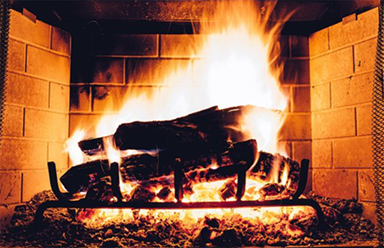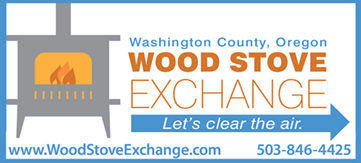Smoke in the air—not just in the summer!

By Susan Mates
A crackling fire may make you feel snug and homey, but it’s a significant health threat. Many Washington County households use wood burning stoves for heating in winter and others enjoy fires just for their coziness and ambiance. What many people don’t realize is that, when a lot of people are burning wood in their homes, the cumulative effect on air quality can be similar to a wildfire. It’s time to rethink how—and whether—we burn wood.

Wood smoke is a complex mixture of over two hundred gases and fine particles. The particles are so tiny (1/60th the width of a human hair) that they go deep into our lungs when we breathe. That makes wood smoke one of the largest sources of cancer-causing pollution in our air. Everyone is affected by wood smoke, but people with respiratory or heart conditions and older adults are especially at risk. Children’s lungs are still developing, so they are particularly susceptible. According to the Center for Disease Control, exposure to wood smoke may make you more susceptible to respiratory infections likely including COVID-19. The science says wood smoke is the new cigarette smoke, and no one should be involuntarily exposed.
Wood smoke is a significant source of the carbon dioxide, carbon monoxide, and black carbon particles that are driving climate change. Here in Washington County, we live in a bowl bounded by the Tualatin Hills, Chehalem Ridge, and the Coast Range. Air gets trapped in this bowl, particularly when colder temperatures create inversions that trap pollution close to the ground, making wood smoke the primary source of our air pollution in winter.
Only a small percentage of Washington County residents burn wood as their primary source of heat. The rest of us burn wood for ambiance and recreation, often in inefficient and higher-polluting fireplaces and outdoor fire pits. If you are one of them, consider changing to a cleaner heat source such as an electric heat pump or a furnace that uses electricity. Make your home warmer by adding insulation and sealing drafts around doors and windows.
If you do choose to continue to burn wood, burn in the cleanest way possible:
If you use a woodstove or wood-burning fireplace insert for home heating, contact Washington County’s Wood Stove Exchange Program and find out how to get a new, cleaner-burning stove for little or no cost.
Burn only dry, split, well-seasoned wood. Properly seasoned wood is darker, weighs less, and sounds hollow when hit against another piece of wood. Keep wood covered and off the ground. Store it at least 12 months before burning. Build small, hot fires.
Never burn trash or construction debris such as treated wood, painted wood, or particle board. They make toxic smoke and can damage your stove as well as your lungs.
We all deserve the right to healthy air. This season consider the most vulnerable among us, your neighbors, and your loved ones before burning wood.





